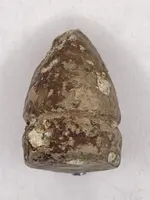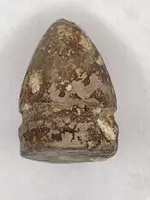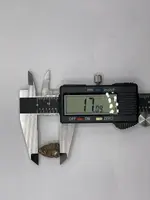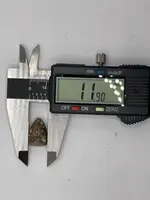Speaking as a 50-year civil war bullet & projectile digger (dug my first one in 1974), and a well-respected ACW Projectiles dealer, and multi-published scholar, I am 100% certain your find is an unfired (but heavily gunpowder-corroded) "Richmond .44 Colt" bullet, so named because it was made and issued at the Confederate Arsenal here in Richmond. It is shown in the "Handbook of Civil War Bullets & Cartridges" (By Jim & Dean Thomas) as bullet number TT-35.
That book says the Richmond Colt .44 bullet's length was .67-inch, which matches exactly with your caliper-measurement showing 17.09mm. Your slug's diameter has been increased about .013-inch from its original .455-inches to .468-inches by powder-concretion and oxidation of the lead. This is commonly seen on unfired pistol-bullets we dig here in Central Virginia civil war battle sites and military campsites.
I personally recognize your corroded Richmond Colt .44 because I've dug many of them near my longtime home in NE Richmond, near the 7-days Battles, and in the 1864-65 Richmond-Petersburg Siege Lines.
Your Richmond Colt .44 bullet was most likely carried into battle by an Officer or a Cavalryman. Infantrymen typically were issued a longarm (musket or rifle), not a pistol.
Note that the nose section of the non-excavated European 11-milimeter Pinfire Revolver slug is much more blunt and short than the nose section of the Richmond Colt .44 bullet. Also, the body groove's location on the 11mm slug does not match up with yours.








